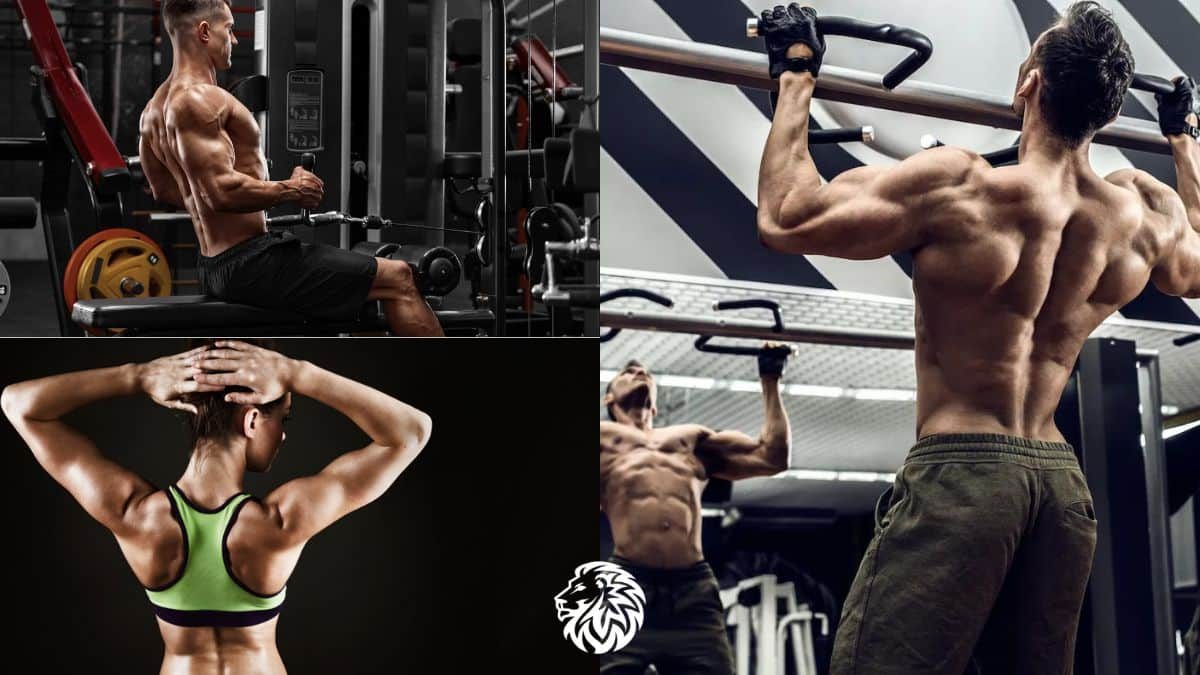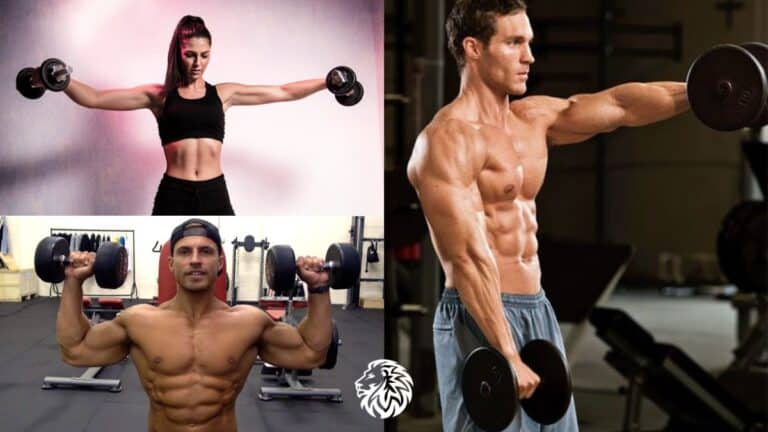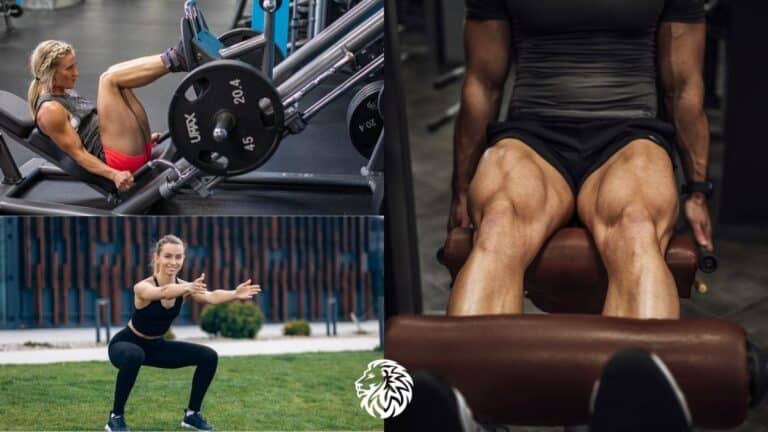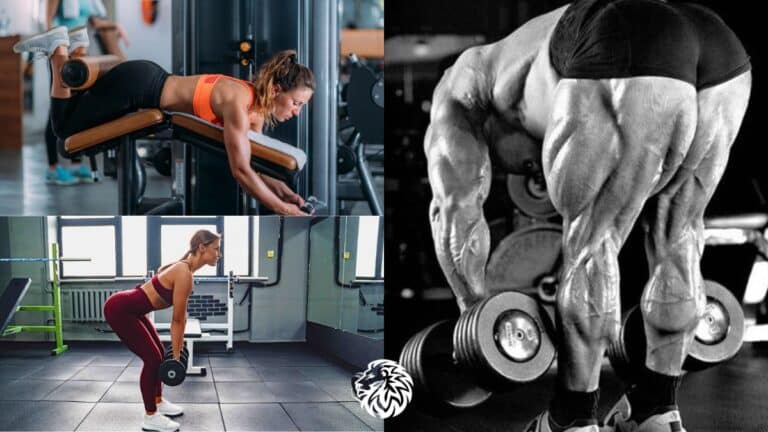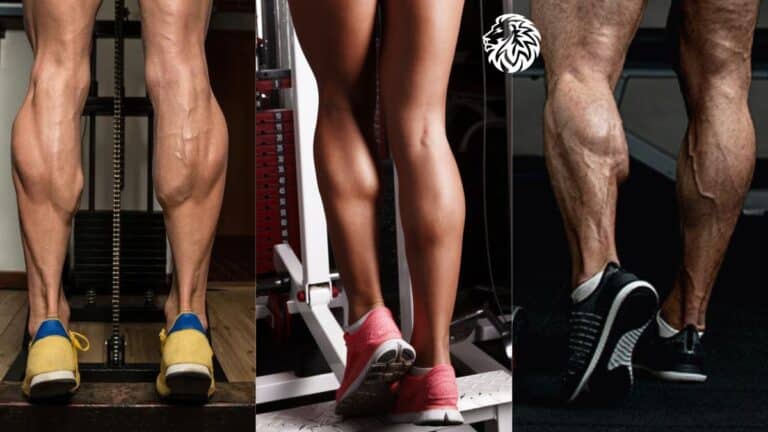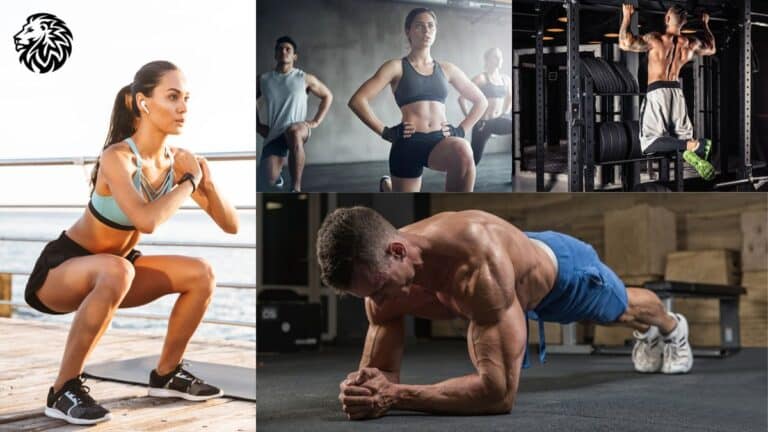The back is a powerhouse in the human body, pivotal not only for physical strength but also for maintaining good posture and overall well-being. Comprising a complex network of muscles such as the latissimus dorsi, trapezius, and the erector spinae, the back is instrumental in various movements — from lifting and pulling to stabilization and posture alignment. Strong back muscles not only enhance an individual’s capacity to perform everyday tasks with ease but also play a critical role in athletic performance across a multitude of sports and activities.
However, developing these muscles is often overlooked in favor of more visible muscle groups like the arms or chest. This oversight can lead to imbalances and potential injuries. Targeted exercises that focus on the back are essential not just for building a symmetrical and aesthetically pleasing physique but also for ensuring a well-rounded fitness routine.
In this article, we delve into the top 5 exercises that are specially designed to maximize muscle growth in your back. These exercises have been chosen for their effectiveness in engaging the various back muscles, promoting strength, enhancing muscle size, and improving overall back health. Whether you’re a fitness enthusiast looking to refine your workout regimen or a beginner eager to strengthen your back, these exercises will serve as a robust foundation for your back training program. Let’s dive in to understand each of these exercises and learn how they can transform your back, providing both functional strength and a visually impressive musculature.
Understanding Back Muscles
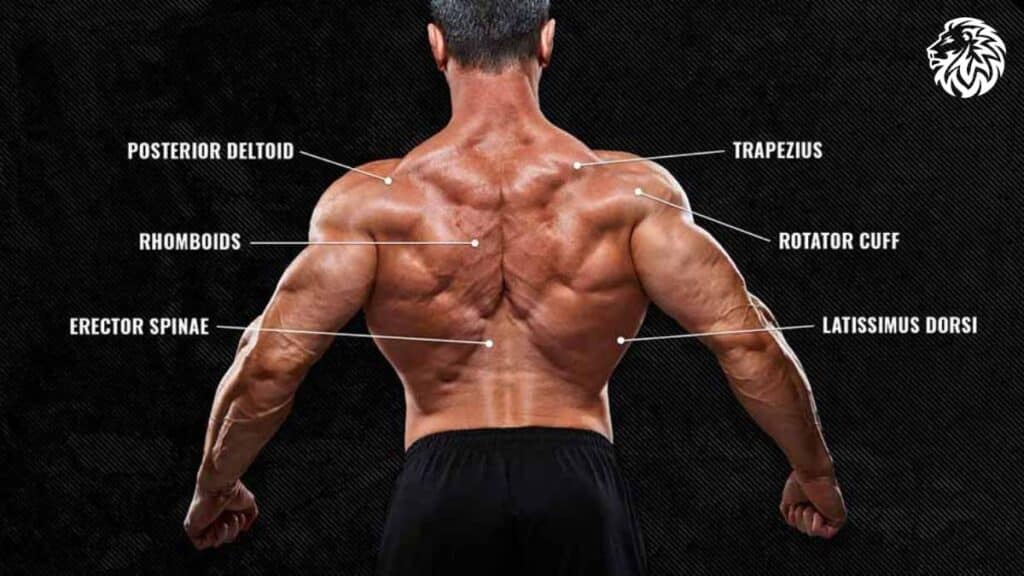
Before diving into the specific exercises that aid in developing a strong and muscular back, it’s important to understand the major muscle groups in this area and the roles they play in our body’s mechanics.
- Latissimus Dorsi (Lats):
- The latissimus dorsi, commonly referred to as the “lats,” are the largest muscles in the back. They are broad, flat muscles that extend from the lower half of the back up to the armpits and across to the upper arms.
- Function: These muscles are primarily responsible for the movement of the shoulder joint, aiding in actions like pulling, lifting, and reaching. They play a key role in activities like swimming, rowing, and even simple tasks like pulling a door.
- Trapezius (Traps):
- The trapezius muscles are triangular-shaped muscles that extend from the neck and upper spine down to the middle of the back and across the shoulder blades.
- Function: These muscles are crucial for moving, rotating, and stabilizing the shoulder blades (scapula). They are involved in shrugging, neck movement, and upper body stabilization, crucial for tasks like carrying heavy objects or maintaining posture while sitting.
- Erector Spinae:
- The erector spinae is a group of muscles and tendons that run along the spine. These muscles are key components in maintaining the natural curve of the spine and supporting its structure.
- Function: They are pivotal in extending the back, allowing for movements like bending backward or standing up straight from a bent position. These muscles play a vital role in everyday activities like lifting, bending, and even standing upright.
- Rhomboids and Smaller Muscle Groups:
- Located between the shoulder blades, the rhomboids are responsible for retracting the scapula, aiding in posture correction and upper back strength.
- Other smaller muscles, like the teres major and minor, contribute to the shoulder’s rotation and overall stability.
These muscles collectively contribute to a well-functioning upper body. They offer the strength needed for pulling, lifting, and other daily activities, and are critical for maintaining good posture. A weak back can lead to poor posture, imbalances, and increased risk of injuries. Thus, strengthening these muscles is not just about aesthetics but also about enhancing functional strength and overall health. In the following sections, we will explore the best exercises to effectively engage and build these crucial back muscles.
5 Best Exercises to Maximize Muscle Growth in Your Back
Exercise 1: Pull-Ups
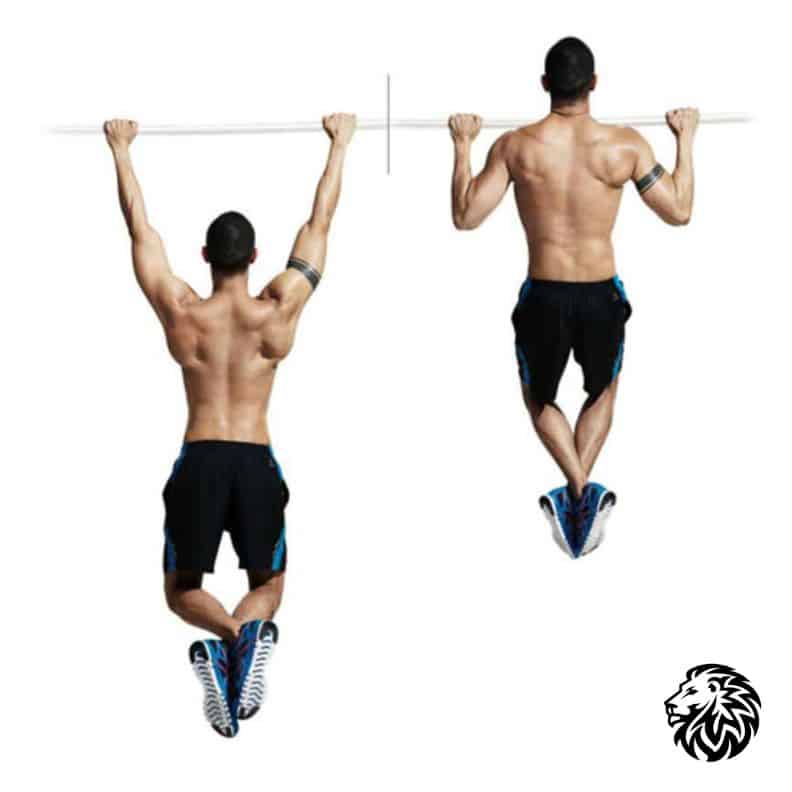
Pull-ups are a fundamental exercise for back development, known for their effectiveness in targeting the latissimus dorsi and other upper body muscles. This exercise requires a pull-up bar and utilizes the body’s own weight as resistance.
Variations of Pull-Ups:
- Wide Grip Pull-Up:
- This variation involves gripping the bar with hands placed wider than shoulder width. It emphasizes the outer part of the lats, enhancing the width of the back.
- Close Grip Pull-Up:
- The hands are placed closer than shoulder width, focusing more on the lower lats and also engaging the biceps and middle back muscles.
Benefits of Pull-Ups:
- Pull-ups are a compound exercise that engages multiple muscle groups in the back, particularly the latissimus dorsi.
- They help in developing a stronger, more muscular upper body and contribute to an improved grip strength.
- Regularly performing pull-ups can lead to better posture and reduced risk of back injuries by strengthening the back muscles.
Step-by-Step Guide to Performing Pull-Ups Correctly:
- Starting Position:
- Stand under a pull-up bar. Grip the bar with your palms facing away from you. For a standard pull-up, place your hands slightly wider than shoulder-width apart.
- Hang from the bar with your arms fully extended. Keep your feet off the ground either by crossing your ankles or bending your knees.
- The Pull-Up:
- Engage your core and pull yourself up by driving your elbows down towards your hips.
- Continue to pull until your chin is above the bar. Ensure that your movements are controlled and steady.
- The Descent:
- Lower yourself back to the starting position in a controlled manner. Your arms should be fully extended again.
- Avoid dropping down suddenly, as this can lead to joint strain.
- Repetitions:
- Perform as many repetitions as you can manage with good form. As you build strength, aim to increase the number of reps or experiment with different grip variations.
Tips for Success:
- Keep your movements controlled; avoid swinging your body or using momentum to lift yourself.
- Focus on engaging the back muscles throughout the exercise rather than relying solely on arm strength.
- If you’re unable to perform a full pull-up initially, start with assisted pull-ups using resistance bands or a pull-up assist machine.
Incorporating pull-ups into your back workout routine can significantly contribute to building a strong, muscular, and functional back.
Exercise 2: Deadlifts
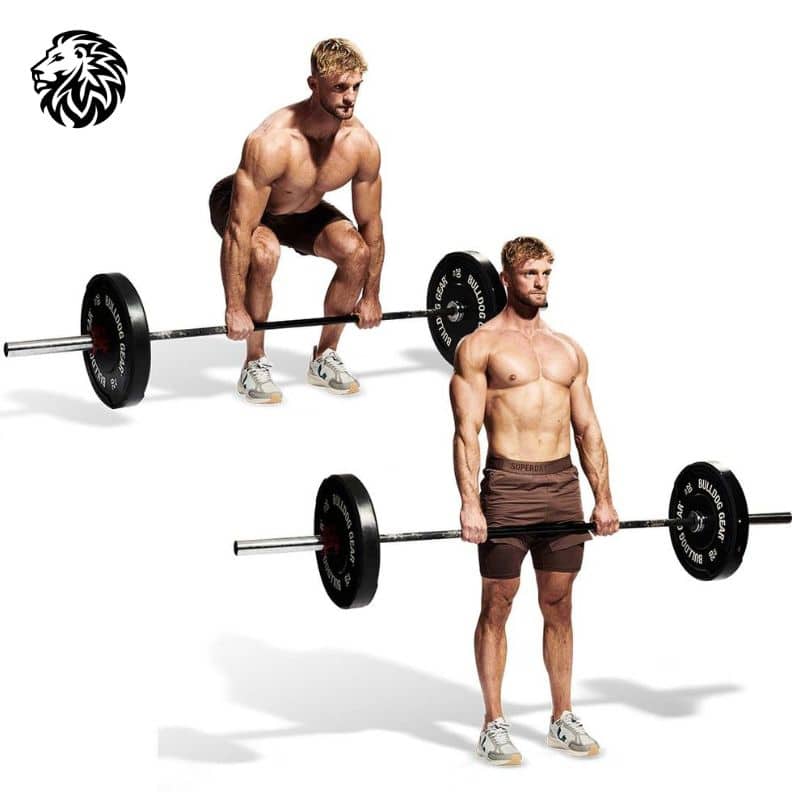
The deadlift is a powerhouse exercise, renowned for its capacity to build strength and muscle in the lower back, glutes, and hamstrings. It’s a compound movement that involves lifting a weight off the ground to a standing position and is integral in any strength or bodybuilding regimen.
Target Areas:
- Lower Back: Deadlifts engage the erector spinae muscles, which run along your spine, reinforcing lower back strength and stability.
- Glutes and Hamstrings: These exercises heavily involve the gluteus maximus and hamstring muscles, crucial for hip extension and overall lower body strength.
Tips for Maintaining Proper Form:
- Starting Position:
- Stand with your feet hip-width apart, toes pointing forward, with the barbell over the middle of your feet.
- Bend at the hips and knees to grip the bar. Your grip should be just outside your legs. You can use an overhand grip or a mixed grip (one hand overhand, the other underhand).
- Lifting Phase:
- Engage your core, and keep your spine neutral.
- Lift the bar by pushing the ground away with your feet, extending your hips and knees.
- Keep the bar close to your body to maintain balance and reduce strain on the lower back.
- Top Position:
- Once you reach a standing position, your shoulders should be back and down, chest out, with hips and knees fully extended.
- Avoid overextending or leaning back at the top of the lift.
- Lowering the Bar:
- Hinge at the hips and bend the knees, lowering the bar to the ground while maintaining a neutral spine.
- Control the descent; do not drop the barbell abruptly.
Variations of Deadlifts and Their Benefits:
- Sumo Deadlift:
- In this variation, your feet are positioned wider than your hands, resembling a sumo wrestler’s stance.
- Benefits: It reduces the range of motion and may be easier on the lower back. It also targets the glutes and inner thighs more than the conventional deadlift.
- Romanian Deadlift (RDL):
- The RDL focuses on hip hinge movement, with less bend in the knees compared to the conventional deadlift.
- Benefits: It emphasizes the hamstrings and glutes and is excellent for developing posterior chain strength.
- Stiff-Legged Deadlift:
- Similar to the RDL but with legs kept straighter, this variation places a greater emphasis on the hamstrings.
- Benefits: It helps in improving flexibility and strength of the hamstrings.
Safety Tips:
- Start with a light weight to master the form before progressing to heavier loads.
- Avoid rounding your back as this can lead to injury.
- Wear appropriate footwear that provides a stable surface.
Incorporating deadlifts into your workout regimen can significantly enhance not just the strength and size of your back muscles but also contribute to overall body strength and functional fitness.
Exercise 3: Bent-Over Rows

Bent-over rows are a potent exercise for targeting the muscles of the middle and upper back. This exercise involves lifting weights towards the torso while in a bent-forward position, effectively working the major back muscles, including the latissimus dorsi, rhomboids, and trapezius.
Target Areas:
- Middle and Upper Back: Bent-over rows primarily engage the rhomboids and the middle portion of the trapezius, contributing to a strong, thick back.
- Latissimus Dorsi: While the focus is on the middle and upper back, bent-over rows also work the lats, enhancing the overall back development.
Proper Technique and Hand Positioning:
- Starting Position:
- Stand with your feet shoulder-width apart, holding a barbell or dumbbells in front of you.
- Hinge forward at your hips with a slight bend in your knees. Keep your back straight, nearly parallel to the floor.
- The Row:
- Grip the weight with hands slightly wider than shoulder-width (for barbells) or let the dumbbells hang at arm’s length.
- Pull the weights towards your lower ribcage, driving your elbows towards the ceiling.
- Squeeze your shoulder blades together at the top of the movement for a full contraction.
- Lowering the Weight:
- Lower the weights back to the starting position in a controlled manner.
- Keep your core engaged throughout the exercise to support your lower back.
Barbells vs. Dumbbells:
- Barbell Rows:
- Provide the ability to lift heavier weights, thus beneficial for overall strength gain.
- Allow for a consistent path of the weight, which can be easier for beginners to grasp.
- Engage more of the lower lats due to the narrower grip.
- Dumbbell Rows:
- Allow for a greater range of motion, which can lead to increased muscle activation.
- Can be more joint-friendly as they allow for natural wrist and arm movement.
- Enable unilateral training, which helps in addressing imbalances between the two sides of the body.
Benefits:
- Bent-over rows are excellent for improving posture by strengthening the muscles that retract the shoulder blades.
- They contribute to a stronger back, which is essential for lifting activities and overall upper body strength.
- This exercise also engages the biceps and forearms, offering a more comprehensive upper body workout.
Incorporating bent-over rows into your back workout can greatly enhance muscle development and functional strength in the upper and middle back regions. As always, focus on form and controlled movements to maximize benefits and minimize the risk of injury.
Exercise 4: Lat Pulldowns
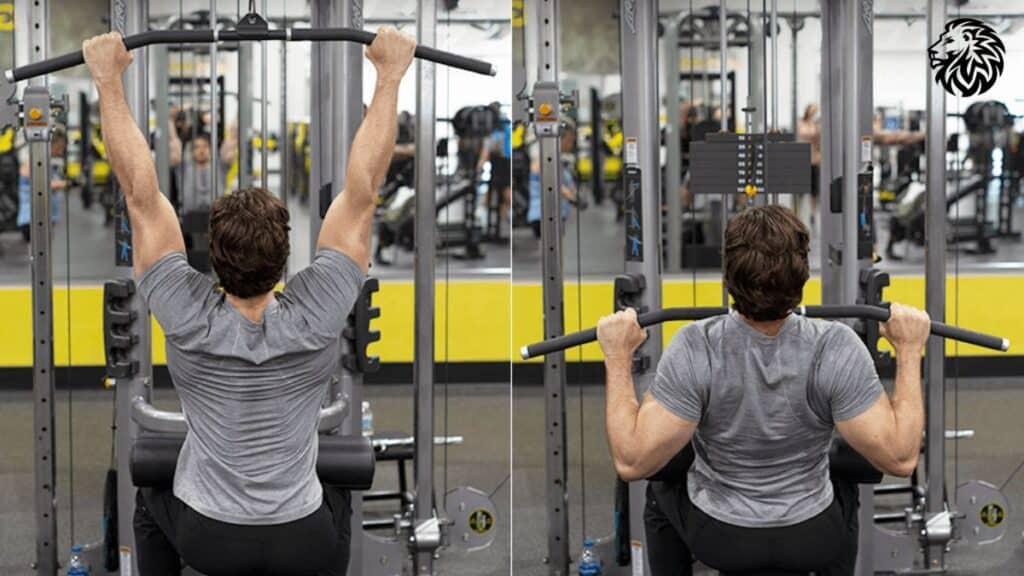
Lat Pulldowns are a popular and effective exercise primarily targeting the latissimus dorsi muscles in the back. Performed using a cable machine with a pulldown bar, this exercise is excellent for developing back width and thickness, especially for those who may not yet be able to perform pull-ups.
Impact on Back Width and Thickness:
- Latissimus Dorsi: Lat pulldowns mainly target the lats, which are the largest muscles in the upper body. Developing these muscles contributes significantly to the ‘V-taper’ appearance, enhancing back width.
- Overall Back Development: Besides the lats, this exercise also engages the biceps, rear deltoids, and rhomboids, contributing to overall back thickness and strength.
Executing Lat Pulldowns with Correct Form:
- Starting Position:
- Sit at a lat pulldown station and grab the bar with a grip wider than shoulder width. Your hands should be in an overhand grip position.
- Sit down and adjust the knee pad to fit snugly against your legs to prevent your body from lifting during the exercise.
- Performing the Pulldown:
- Lean back slightly and pull the bar down towards your chest, keeping your elbows pointed straight down.
- Draw your shoulder blades down and back as you pull the bar towards your chest.
- Returning to Start:
- Slowly extend your arms back to the starting position, allowing your shoulder blades to rise slightly at the top.
- Maintain control throughout the movement; avoid letting the weight stack crash.
Varying Grip Width and Angle:
- Wide Grip: A wider grip focuses more on the outer lats, enhancing back width.
- Narrow Grip: A closer grip, either overhand or underhand (supinated), shifts some focus to the lower lats and can also increase biceps engagement.
- Varying Angles: Altering the angle of your torso during the pull (leaning back slightly more or less) can target different areas of the lats for a more comprehensive development.
Importance of Grip and Angle Variations:
- Muscle Engagement: Different grips and angles can engage the muscles in slightly different ways, leading to more balanced muscle growth.
- Adaptation Prevention: Regularly changing grips and angles prevents your muscles from becoming too accustomed to a single movement pattern, which can lead to plateaus in muscle growth.
- Joint Health: Varying grips and angles can also help in reducing repetitive strain on joints by distributing the workload across different joint angles.
Lat pulldowns are a versatile and effective exercise for building a strong, wide, and thick back. They are particularly useful for beginners and those unable to perform bodyweight pull-ups, offering a controlled way to build up back strength and endurance.
Exercise 5: T-Bar Rows
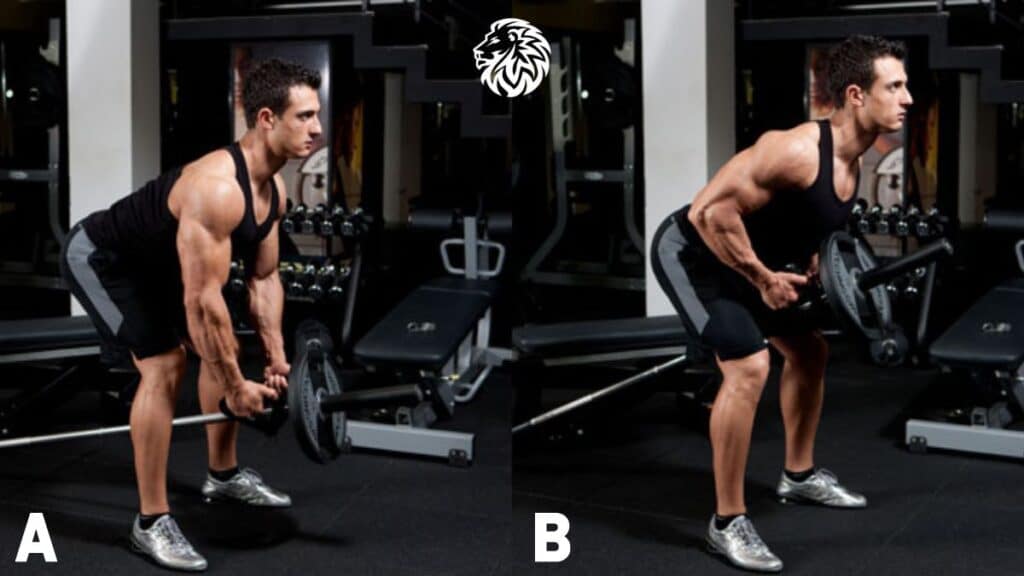
T-Bar rows are a potent compound exercise that targets multiple muscles in the back. They are performed using a T-bar machine or by positioning one end of a barbell in a corner and attaching a handle to the other end. This exercise is highly effective for building muscle mass and strength in the back.
Effectiveness for Back Muscle Growth:
- Target Muscle Groups: T-Bar rows primarily work the muscles in the middle and upper back, including the latissimus dorsi, rhomboids, and trapezius. They also engage the rear deltoids, biceps, and forearms.
- Muscle Hypertrophy: The exercise allows for heavy lifting with relative safety, making it great for muscle hypertrophy (growth).
- Compound Movement: Being a compound exercise, it stimulates a larger number of muscles simultaneously, leading to more balanced muscle development and improved overall strength.
Performing T-Bar Rows Safely and Effectively:
- Setup:
- Place one end of a barbell in a corner or a landmine attachment to secure it. Load the opposite end with appropriate weights.
- Stand over the bar, feet shoulder-width apart, with your knees slightly bent. Grip the handle or the bar itself with both hands.
- Execution:
- Bend forward at the waist, keeping your back straight, so it’s almost parallel to the floor.
- Pull the bar towards your chest, keeping your elbows close to your body and driving them towards the ceiling.
- Squeeze your shoulder blades together at the top of the movement for maximal muscle engagement.
- Lowering the Weight:
- Lower the weight in a controlled manner until your arms are fully extended.
- Avoid jerky movements or excessive momentum to prevent injury.
Incorporating T-Bar Rows into Your Back Workout:
- Frequency: Include T-Bar rows 1-2 times per week in your back workout routine, depending on your overall training volume and goals.
- Position in Workout: Since T-Bar rows are intense, perform them early in your workout when you have the most energy. They can be paired with pull-ups or lat pulldowns for a comprehensive back workout.
- Variations: To target different areas of the back, you can vary your grip width or the angle of your torso. A wider grip emphasizes the upper back, while a narrower grip targets the middle back and lats.
Safety Tips:
- Start with a lighter weight to perfect your form before progressing to heavier loads.
- Keep your movements controlled, especially during the lowering phase to prevent back strain.
- Ensure that your spine remains neutral throughout the exercise to avoid undue pressure on the lower back.
T-Bar rows are an excellent exercise for developing a strong, muscular back. They offer the versatility of grip and angle adjustments, allowing for comprehensive back development. As with any exercise, focus on form and controlled movements to maximize gains and minimize the risk of injury.
Additional Tips for Maximizing Muscle Growth
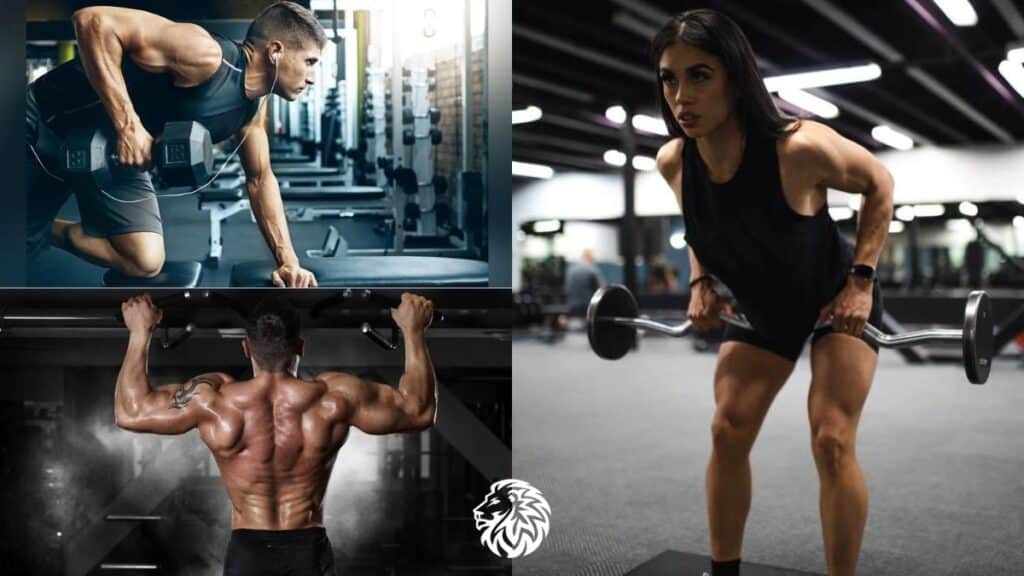
While specific exercises are crucial for developing the back muscles, several other factors play a significant role in maximizing muscle growth. Understanding and implementing these principles can lead to more effective workouts and better results.
- Importance of Progressive Overload:
- Definition: Progressive overload involves gradually increasing the amount of stress placed on your muscles during training. This can be achieved by increasing the weight, altering the number of repetitions or sets, or modifying the exercise intensity or volume.
- Application: For back exercises, start with a weight that allows you to perform exercises with proper form. Gradually increase the weight or the number of reps over time to challenge your muscles continually.
- Proper Nutrition:
- Protein Intake: Adequate protein is essential for muscle repair and growth. Aim for a diet rich in high-quality protein sources like lean meats, fish, dairy, legumes, and plant-based proteins.
- Balanced Diet: Along with protein, include a balance of carbohydrates for energy and healthy fats for hormone regulation and overall health.
- Hydration: Staying well-hydrated is crucial for optimal performance and recovery. Water plays a key role in nutrient transport and muscle function.
- Role of Rest and Recovery:
- Rest Days: Muscle growth occurs during rest periods, not just when you’re working out. Ensure you have rest days in your workout routine to allow for muscle recovery and growth.
- Sleep Quality: Adequate sleep is essential for muscle recovery. Aim for 7-9 hours of quality sleep per night.
- Active Recovery: Incorporate light activities like walking or yoga on rest days to promote blood flow and aid in muscle recovery without overexerting.
- Integrating Exercises into a Back Workout Plan:
- Balanced Routine: Combine different exercises that target all major muscle groups in the back. For example, pair a vertical pull exercise (like pull-ups) with a horizontal pull exercise (like bent-over rows).
- Frequency: Depending on your overall fitness routine, aim to train your back 1-2 times per week. Ensure you’re allowing adequate recovery time between sessions.
- Variety: Periodically change your exercises, grip styles, and rep ranges to keep your muscles challenged and prevent plateauing.
- Monitoring Progress:
- Track Workouts: Keep a record of your workouts, including the exercises, weights, sets, and reps. This will help you in applying progressive overload effectively.
- Listen to Your Body: Pay attention to how your body feels. If you experience excessive fatigue or pain, it may indicate a need for more rest or a review of your technique.
By combining these additional factors with a well-structured back workout routine, you can significantly enhance your muscle growth and overall back strength. Remember, consistency, along with proper training and recovery practices, is key to achieving your muscle-building goals.
Conclusion
In this article, we explored five key exercises that are essential for maximizing muscle growth in the back: Pull-Ups, Deadlifts, Bent-Over Rows, Lat Pulldowns, and T-Bar Rows. Each exercise serves a unique purpose in developing different areas of the back, from the broad latissimus dorsi to the intricate muscles of the upper and middle back.
Recap of Key Points:
- Pull-Ups: Essential for developing the upper back and lats, offering variations such as wide and close grips.
- Deadlifts: A powerhouse movement that targets the lower back, glutes, and hamstrings, with variations like the sumo and Romanian deadlifts.
- Bent-Over Rows: Excellent for middle and upper back development, with the choice of using barbells or dumbbells.
- Lat Pulldowns: A versatile exercise for those who cannot perform pull-ups, focusing on the width and thickness of the back.
- T-Bar Rows: Targeting multiple back muscles, this exercise is key for overall back strength and muscle mass.
Maintaining Consistency and Focus on Form: Achieving optimal results in muscle growth, especially in the back, requires more than just performing exercises; it necessitates a consistent and dedicated approach. Adhering to a regular workout schedule and progressively challenging your muscles are crucial components of muscle development.
Equally important is the emphasis on proper form. Incorrect form not only reduces the effectiveness of the exercises but also significantly increases the risk of injury. Paying close attention to your technique, especially during complex movements like deadlifts and rows, ensures that the right muscle groups are engaged and that your workout is both safe and effective.
Incorporating these exercises into a balanced workout routine, along with adhering to principles of proper nutrition, adequate rest, and recovery, will set a solid foundation for back muscle growth. Remember, the journey to a stronger and more muscular back is a marathon, not a sprint. Patience, persistence, and a focus on quality over quantity will lead to the best long-term results.
Stay motivated, be consistent with your training, and always prioritize form and safety to enjoy the journey towards achieving a strong, well-developed back.
